Is Talc in Deodorant Bad for You? Uncovering the Truth
The use of talc in deodorants has been commonplace for its ability to absorb moisture and prevent chafing. However, the safety of talc in these products has been the subject of debate among consumers and health experts alike. Concerns have been raised about the potential health implications of talc, particularly when it is applied near sensitive areas of the body.
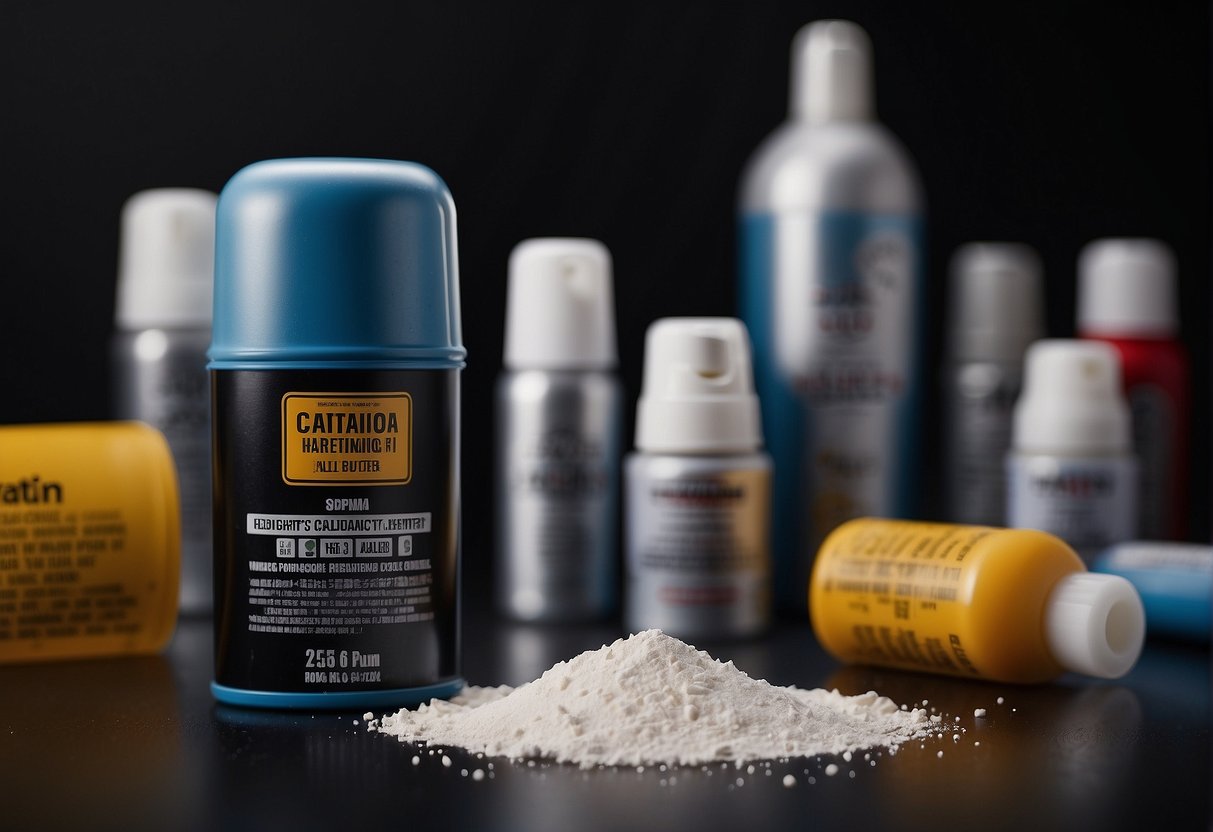
Research into the health implications of talc in deodorant is ongoing, with some studies suggesting a link between talc and certain health conditions, while regulatory bodies maintain certain standards for cosmetic talc purity. In light of these concerns, the cosmetics industry has begun to offer alternatives to talc-containing deodorants, and consumers are increasingly interested in understanding product labels to make informed choices.
Key Takeaways
- Talc in deodorant is used for moisture absorption but has raised health and safety concerns.
- Ongoing research explores the potential health risks associated with talc use in personal care products.
- Alternative ingredients are available, and understanding product labels can guide safer choices.
The Role of Talc in Deodorant
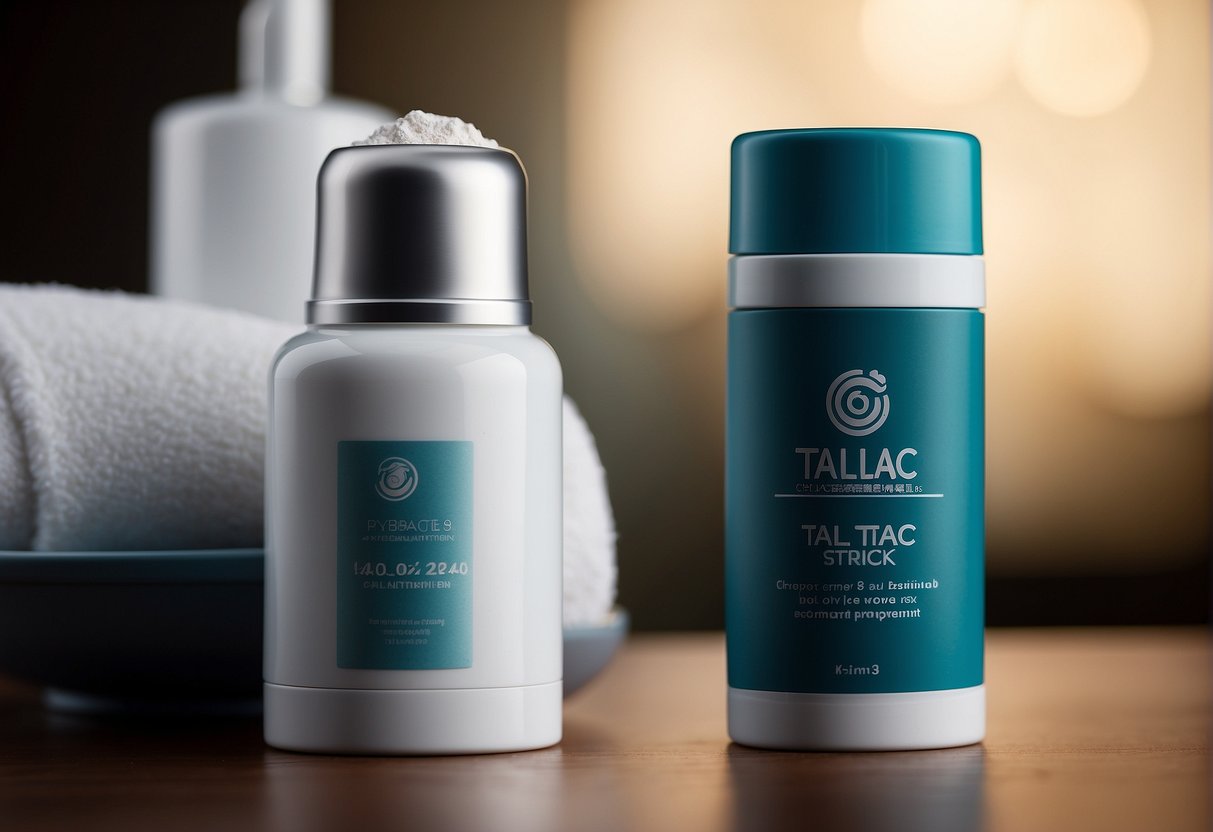
Talc is a mineral composed primarily of magnesium, silicon, and oxygen. In the context of personal care products, talc plays a significant role due to its ability to absorb moisture, which makes it a valuable ingredient in deodorants. We often find talc in deodorants because it helps to keep the skin dry, reduces body odors, and provides a smooth application.
Cosmetic talc, which is used in various personal care items, is considered distinct due to its refined quality. The main allure of including talc in deodorants lies in its innate property to minimize dampness and aid in keeping the underarm area dry. Additionally, talc often serves as a carrier for fragrance, enhancing the scent of deodorant.
We are aware that the use of talc in cosmetics, including deodorant, does come with its concerns. Investigations into health effects have been conducted, particularly examining whether talc can introduce unwanted substances when encapsulated by other ingredients in a product. However, the safety assessments typically focus on the particular context of how talc is used in the formulation, as its interaction with other ingredients can change its properties.
Health Implications of Talc
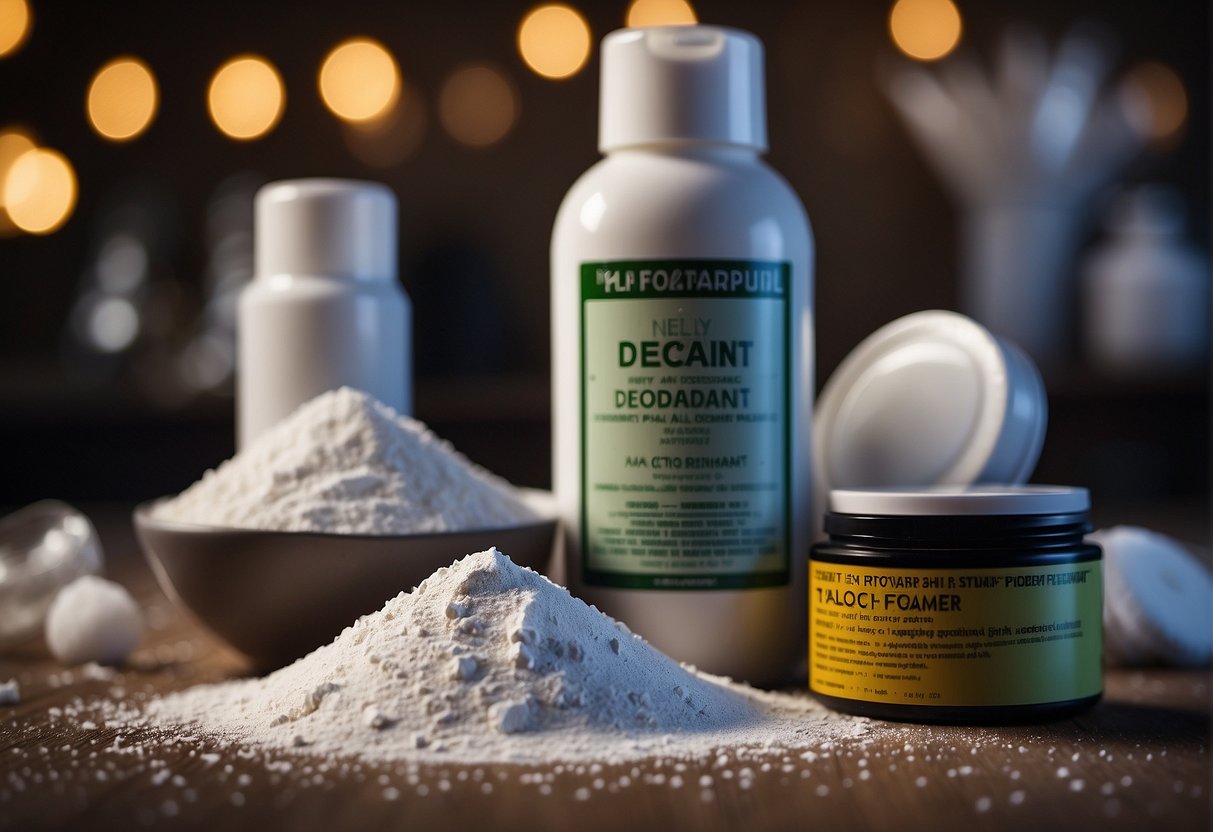
We examine the potential health concerns associated with the use of talc in deodorants, focusing on cancer risks, skin and respiratory reactions, and specific health implications for women.
Cancer Risk and Talc
Asbestos Contamination: Talc deposits can be contaminated with asbestos fibers, which are known carcinogens. The inhalation of asbestos-contaminated talc particles can increase the risk of lung cancer and mesothelioma. Cosmetic-grade talc should be asbestos-free, but cross-contamination can occur if mining sites are not carefully selected and tested.
Ovarian Cancer: Some studies suggest a link between the use of talcum powder in the genital area and an increased risk of ovarian cancer. However, research results have been mixed, and the overall risk is still the subject of scientific investigation.
Skin and Respiratory Reactions
Skin Irritation and Inflammation: Talc can cause skin irritation or inflammation, particularly in those with sensitive skin or allergies to talc. Regular use in deodorants may lead to localized skin issues, including dryness and irritation.
Respiratory Diseases: Inhaling talc particles can lead to respiratory problems. This is particularly concerning for individuals with pre-existing respiratory conditions, as talc can exacerbate symptoms.
Talc and Women's Health
Breast Tissue: Concerns have been raised about the use of talc-containing deodorants and possible absorption into the breast tissue, potentially increasing the risk of breast cancer. Current evidence does not conclusively link talc use in deodorants with breast cancer, but ongoing research may provide further insights.
Reproductive Issues: The use of talc-based products in the female genital area has been scrutinized for its potential association with reproductive issues. Long-term studies are required to determine the validity of these concerns.
Regulatory Perspective and Safety Standards
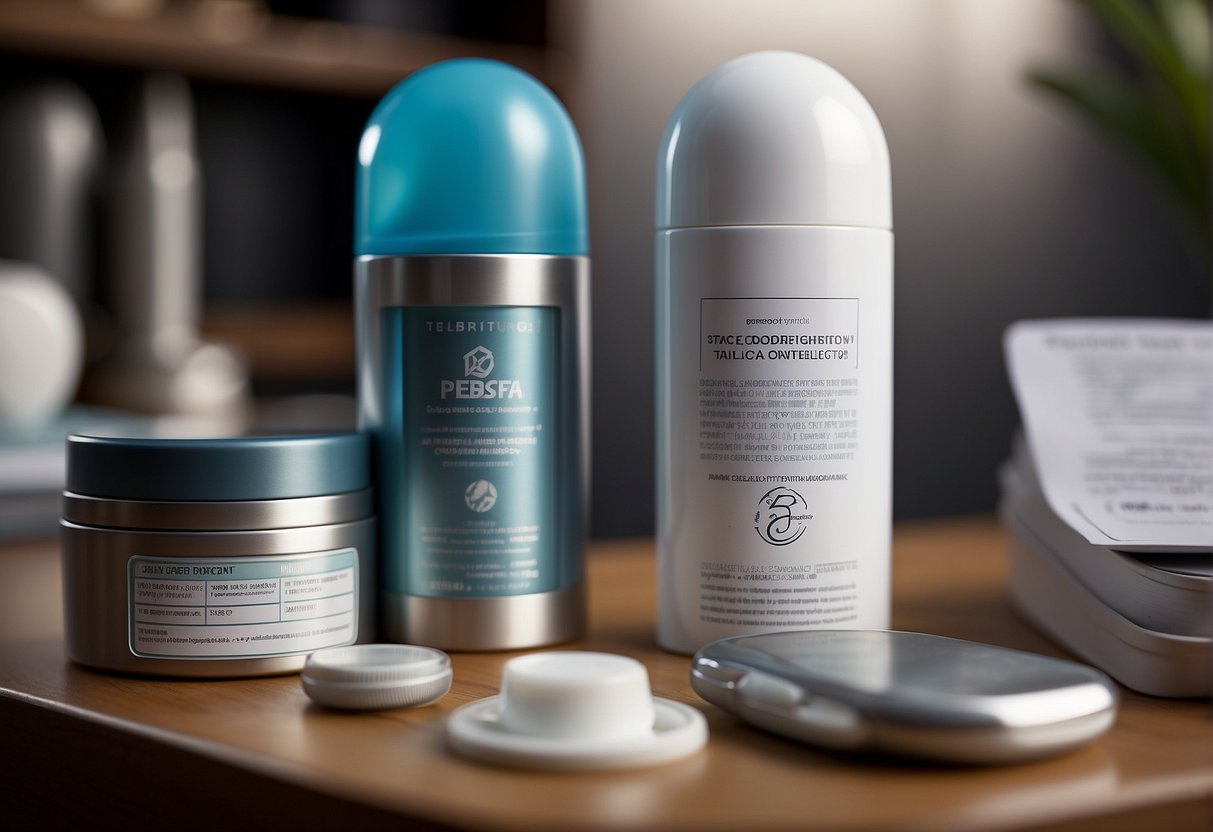
In our role as informed industry observers, we note that the U.S. Food and Drug Administration (FDA) classifies talc used in cosmetic products, including deodorants, as a substance that should be safe under labeled or customary conditions of use. While the FDA does not formally approve cosmetic products, it does monitor their safety and can take action if safety concerns arise. Cosmetics companies are legally required to ensure their products are safe and properly labeled.
Testing for contaminants such as asbestos, a known carcinogen, is critical where talc is concerned, as it is a naturally occurring mineral. The FDA has guidelines in place that cosmetic products, including talc-containing ones, should be free from recognized contaminants, specifically those that can lead to asbestos contamination. We've learned that the Cosmetic, Toiletry, and Fragrance Association (now known as Personal Care Products Council) has set purity standards for talc, indicating the industry's awareness and proactive stance on the issue.
Regarding safety, the American Cancer Society recognizes that studies on the safety of talc in cosmetics yield mixed results; however, there is consensus on the potential risks of contamination with asbestos. The World Health Organization (WHO) classifies talc that contains asbestos as "carcinogenic to humans," while it considers the form without asbestos as "not classifiable as to carcinogenicity in humans." Asbestos-free cosmetic talc products are considered generally safe, but vigilance in regulation and testing by concerned entities remains paramount to ensure consumer safety.
Alternatives to Talc in Deodorant
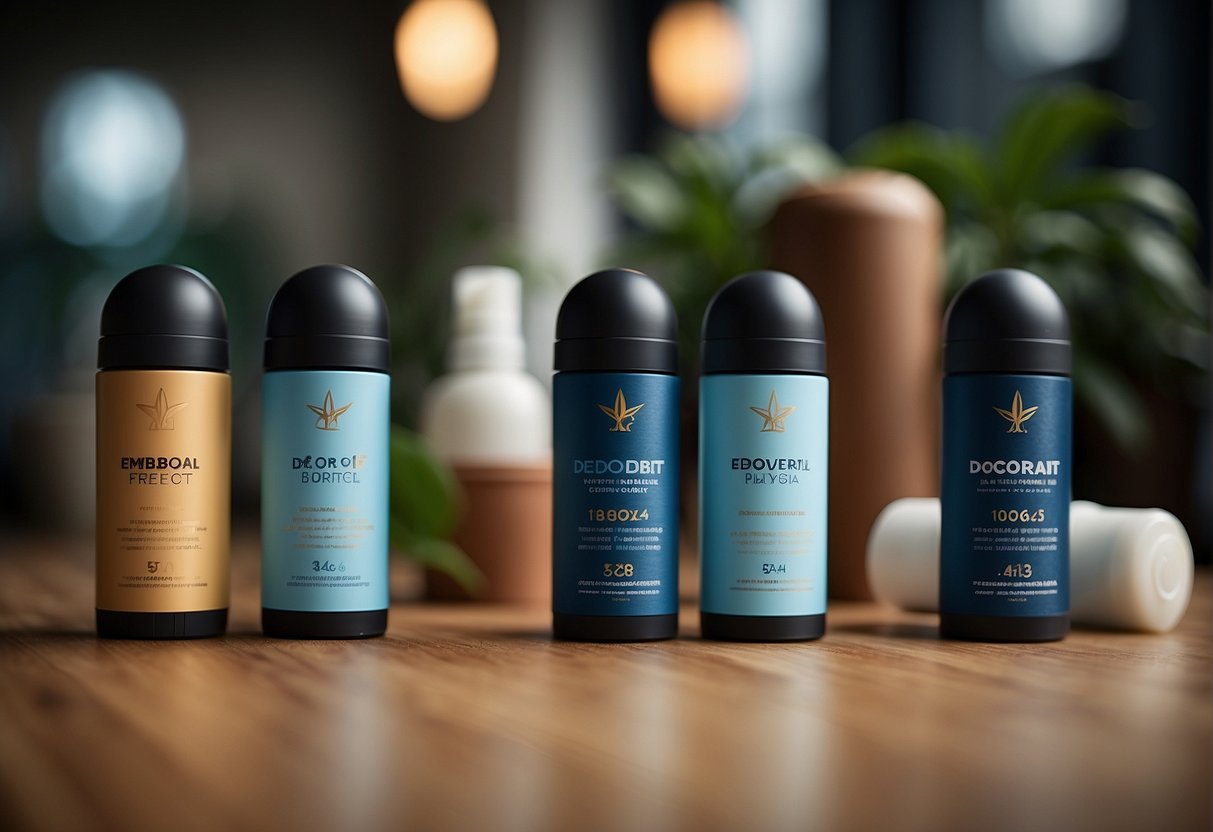
In our pursuit of safe and effective hygiene products, we've identified several alternatives to talc in deodorants. These alternatives cater to concerns regarding talc's potential health risks and are effective in controlling both moisture and odor.
Natural Ingredients: Many natural deodorants forgo talc in favor of ingredients like baking soda and arrowroot powder. These substances work to absorb excess moisture naturally and are less likely to cause skin irritation for those with sensitivities.
Bacteria Inhibitors: A key function of deodorant is to reduce body odor, which is caused by bacteria. Instead of using talc or aluminum, some formulations rely on natural antibacterial agents such as tea tree oil or witch hazel to target odor-causing bacteria directly.
Safe Synthetics: Some manufacturers use safe synthetic alternatives like silica, a moisture-absorbing agent that provides a similar dry-touch feel as talc without the associated health concerns.
Here is a brief breakdown of the key alternatives:
| Alternative | Function | Benefit |
|---|---|---|
| Baking Soda | Absorbs moisture | Natural, minimizes odors |
| Arrowroot Powder | Absorbs moisture | Gentle on skin, effective moisture absorber |
| Silica | Absorbs moisture | Synthetic, but considered safe and non-toxic |
| Tea Tree Oil | Reduces bacteria | Natural, known for its antibacterial properties |
| Witch Hazel | Reduces bacteria | Natural astringent, minimizes pores and odors |
We steer clear of parabens, phthalates, and triclosan, due to concerns about their potential health impacts. Instead, we embrace ingredients like magnesium, which neutralizes odor and is beneficial for skin health, and avoid propylene glycol, which can be irritating to sensitive skin. Our formulations focus on achieving the desired antiperspirant effects without compromising on safety or efficacy.
Understanding Labels and Choosing Safe Products

When we purchase beauty and personal care items like deodorants, soaps, and other cosmetics, diligently reading product labels is crucial. Ingredients listed on products help us identify safe options; we should be wary of harmful chemicals such as certain fragrances and additives that can disrupt hormones or cause other health issues.
To ensure consumer safety, we prioritize products that transparently disclose all components and prefer brands that are trustworthy and have robust safety standards. Spotting bad ingredients on labels, including certain forms of talc associated with health risks, enables us to make informed choices.
Here's a quick reference for choosing safe deodorant:
| To Avoid | To Consider |
|---|---|
| Synthetic fragrance | Natural fragrance |
| Aluminum compounds | Aluminum-free |
| Propylene glycol | Certified organic ingredients |
| Parabens | Paraben-free |
| Certain forms of talc | Talc-free or food-grade talc |
By educating ourselves on cosmetic product labels and opting for brands that openly communicate about their ingredients, we can substantially reduce our exposure to toxic chemicals in deodorant and other beauty products. This proactive approach to reading labels not only protects our health but also encourages the industry to maintain high standards for safe, consumer products.
Environmental and Developmental Impact of Cosmetic Talc
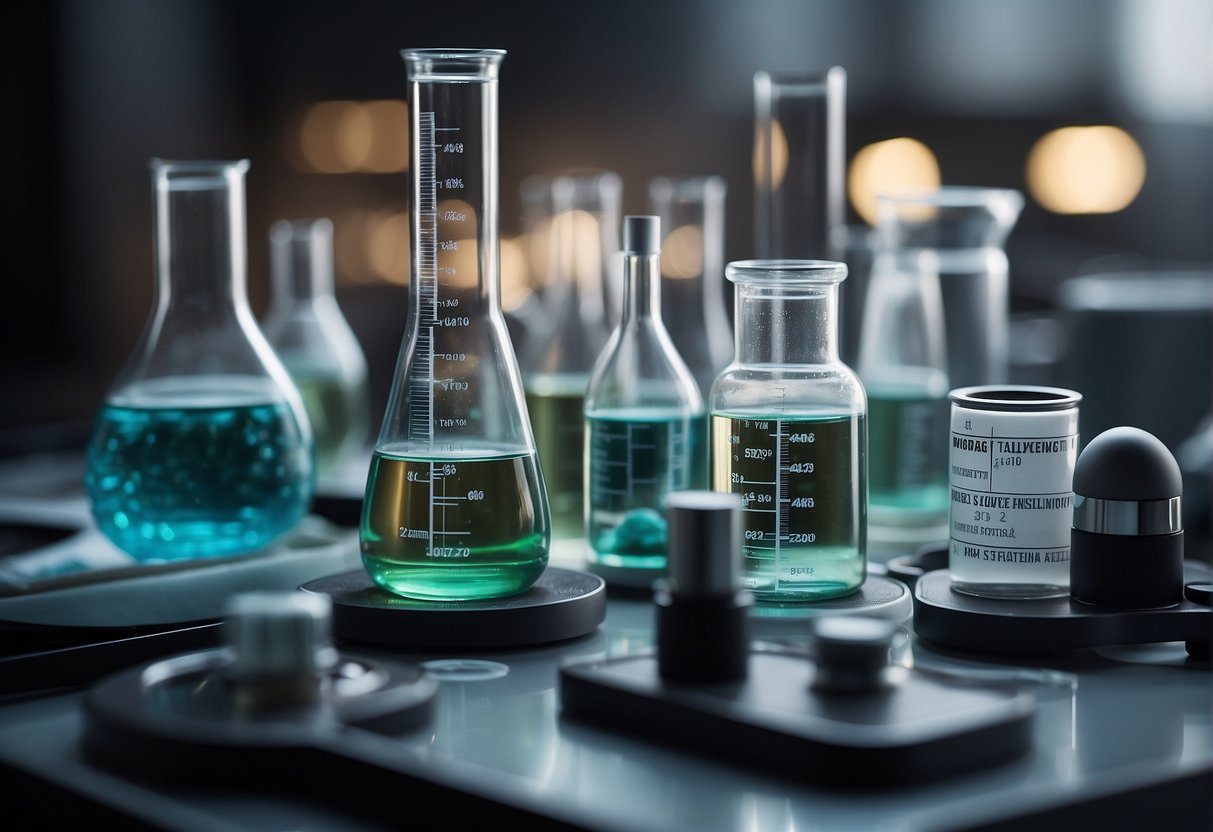
In assessing the environmental aspect of cosmetic talc, our focus extends to the mining process and the eventual disposal of talc-containing products. The mining of talc for cosmetic use, such as in baby powder and makeup, can lead to habitat disruption and pollution. We also consider the contaminants that may be released into the ecosystem, posing potential risks to wildlife and water sources.
From a developmental perspective, the primary concern surrounds the presence of asbestos in cosmetic talc. Asbestos, a known carcinogen, may contaminate talc due to their similar crystal structure and often proximate mining locations. We acknowledge that, historically, certain talc products tested have been found to contain asbestos fibers, which are linked to health risks including cancer.
Manufacturers have a responsibility to ensure the safety and purity of cosmetic talc. Science has shown that cosmetic products, including deodorant and baby powder, must be free from toxins such as lead, silicon, and asbestos. The industry is obligated to rigorously test cosmetic talc to prevent developmental impacts from contaminants. We emphasize that parents and caregivers are advised to be cautious of talc-containing products for diaper rash to avoid exposure to harmful substances.
In our ongoing examination, we track the recent efforts by science and regulatory bodies to refine testing methods for the presence of asbestos in talc. It is crucial for ensuring that the products reaching consumers remain safe for their intended cosmetic purposes while minimizing their environmental footprint.
Frequently Asked Questions
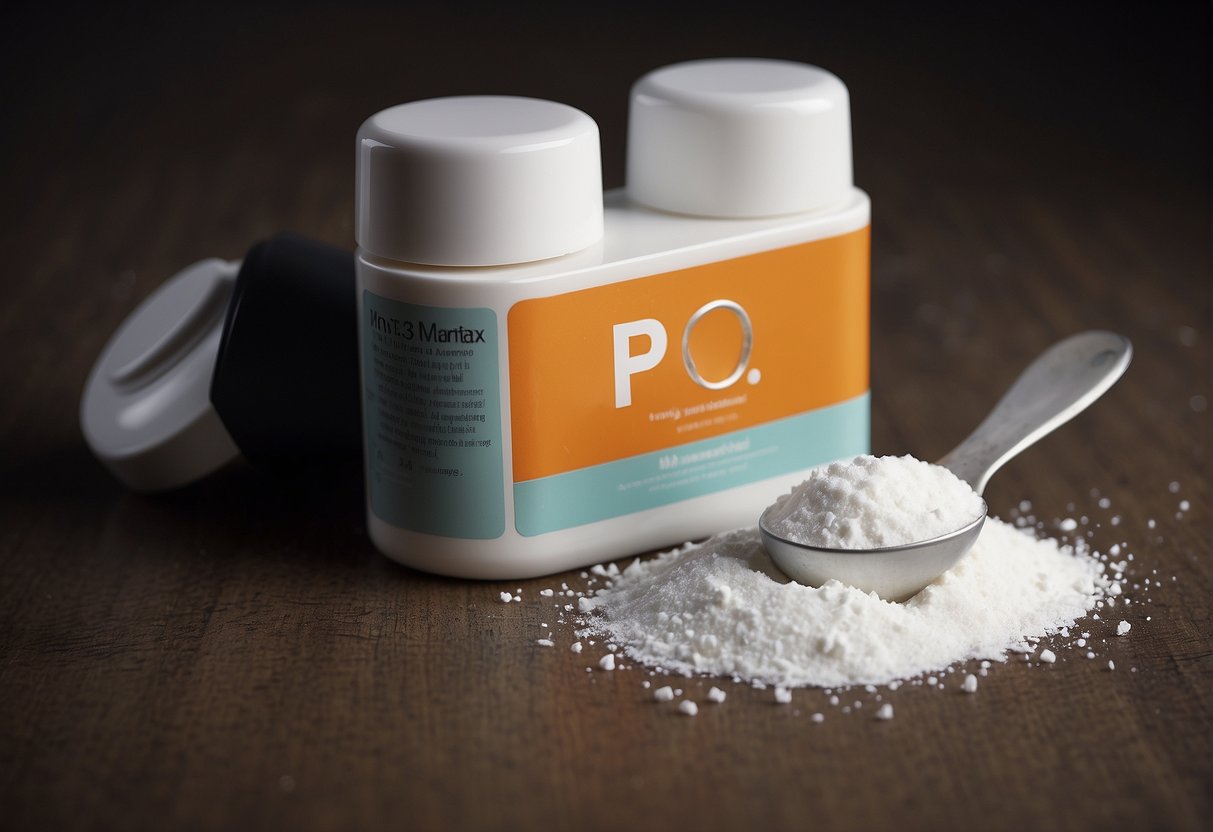
In this section, we'll address common concerns about the use of talc in deodorants, including potential health effects, cancer risks, and safer alternatives.
What are the potential health effects of using deodorants containing talc?
The use of talc in deodorants has been associated with skin irritation in some individuals. Prolonged exposure to talc in personal care products may pose additional health concerns, although comprehensive research is still needed for definitive conclusions.
Can deodorants with talc be linked to cancer risks?
Some studies have suggested a possible link between the use of talcum powder in deodorants and an increased risk of certain types of cancer, such as ovarian cancer. However, the evidence is not conclusive, and ongoing research aims to provide clearer insights.
What are the safe alternatives to talc in deodorants?
Safe alternatives to talc in deodorants include cornstarch, arrowroot powder, and baking soda. These ingredients are generally considered to be less irritating and are often found in natural deodorant products.
How can I identify harmful ingredients in deodorants?
To identify harmful ingredients in deodorants, we recommend reading product labels and looking out for listed substances that have been associated with health risks. Websites and databases dedicated to cosmetic safety can also be valuable resources.
Are there any deodorants without aluminum and talc, and why might they be preferable?
There are deodorants available that do not contain aluminum or talc. These alternatives are preferable for those who wish to avoid the potential skin irritation caused by talc and the controversial links between aluminum and health concerns such as breast cancer and Alzheimer's disease.
What are the benefits of using an aluminum-free deodorant?
The benefits of using an aluminum-free deodorant include reduced risk of skin irritation and the avoidance of aluminum compounds that may clog pores. Choosing aluminum-free deodorants also aligns with the preferences of those aiming for natural skincare routines.